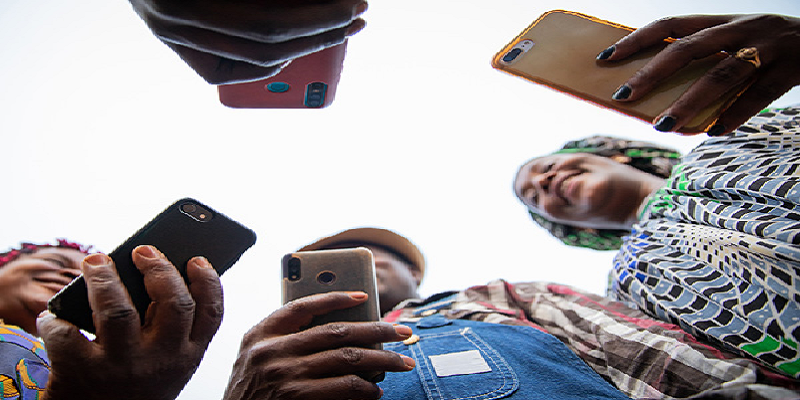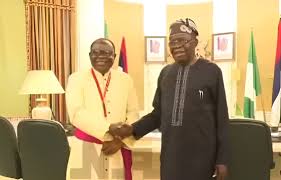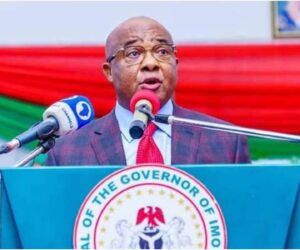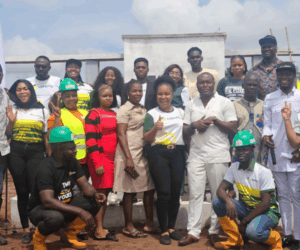The Global System for Mobile Communications Association (GSMA) is collaborating with major African telecom operators like MTN and Vodacom to develop a $30 (₦44,000) smartphone. This initiative aims to increase 4G access and internet adoption by providing affordable devices to millions across Africa, currently priced out of the smartphone market.
At the Mobile World Congress in Kigali, Rwanda, Airtel, Axian Telecom, Ethio Telecom, Orange, MTN, and Vodacom launched the GSMA Handset Affordability Coalition to develop affordable devices that meet basic modern internet standards.
GSMA’s Director-General Vivek Badrinath said smartphones are not a luxury item but a necessity for inclusion in today’s digital world. “Access to a smartphone is a lifeline to essential services, income opportunities, and participation in the digital economy,” he said.
The group has already designed a list of minimum requirements for the ₦44,000 smartphone, covering storage capacity, battery life, display size, camera quality, and 4G support. The aim is to make sure the phones are cheap without being useless.

What a regular ₦44,000 smartphone can do
Typically, a $30 (₦44,000) smartphone is an ultra-budget device, featuring a small 4-inch screen, approximately 1GB of RAM, and limited 8GB or 16GB storage. These phones handle basic calls, texts, and light browsing, but struggle with multitasking or demanding apps.
These phones often suffer from freezing issues with social media apps, produce low-quality images, and have short battery life due to limited capacity. They typically run outdated software that struggles with modern app updates.
They suffice for basic communication but lack the capacity for a full internet experience. Consequently, many Africans with mobile network coverage forgo smartphones, finding them either too expensive or too underpowered for practical use.
For instance, most ultra-budget Android devices or feature-smart hybrids out in the market today, like older Itel A-series or TECNO Pop phones, commonly lag when switching between apps or watching videos on YouTube.
Even simple tasks like opening WhatsApp, browsing mail, or using Google Maps can be slow or agonising. The limited storage also requires users to frequently delete photos, videos, or applications just to create space for operating system updates.
Because of such constraints, people who own such phones become cut off from modern digital resources, requiring higher levels of processing power. Web-based education, videoconferencing, banking online, and e-commerce packages either run inefficiently or not at all.


In rural or impoverished places where such phones dominate, customers mostly restrict themselves to voice calls and SMS, missing out on the opportunities the internet presents for learning, business, and financial inclusion.
Why the devices by GSMA, MTN and others are different
Unlike most cheap phones sold today, this ₦44,000 smartphone will meet shared standards across multiple telecom networks. The coalition wants to guarantee that users can browse, stream, and use essential apps smoothly without the frustration common to low-end phones.
The phone will support reliable 4G connectivity, come with enough storage for basic apps, and include a strong battery for longer usage. These improvements are expected to make it more durable and useful in daily life.
By coordinating resources to negotiate with manufacturers, set quality standards, and lower production costs at scale, the GSMA coalition delivers better, cheaper smartphones for everyone, outperforming individual companies attempting to produce their own inexpensive phones.
Also read: “5G can contribute $26 billion to Africa’s GDP by 2030” -GSMA says
Telecom operators are also working with governments to reduce taxes that raise device prices. For example, South Africa recently scrapped a 9% import tax on smartphones priced below R2,500 (about ₦200,000). The GSMA wants other countries to follow this path to make the ₦44,000 smartphones more achievable.
MTN and Vodacom have been exploring affordability programs, with MTN distributing 1.2 million smartphones at R99 (approximately ₦8,000) via financing, and Vodacom offering a cloud-based 4G phone designed by Mobicel for R249 (₦20,000).
This ₦44,000 smartphone project aims to bridge Africa’s digital divide by providing affordable devices. Despite mobile broadband coverage, many Africans cannot afford smartphones; the GSMA reports that over 3 billion people globally are offline due to device costs.


The organisation estimates that a $30 phone could help 50 million more people in Sub-Saharan Africa get online. This would expand access to education, health information, mobile banking, and e-commerce services that have become essential for everyday life.
In Nigeria and across Africa, the introduction of affordable smartphones (₦44,000) has the potential to transform the lives and work of millions still using feature phones. These internet-enabled devices would expand access to e-learning, digital workspaces, healthcare, and financial tools.








